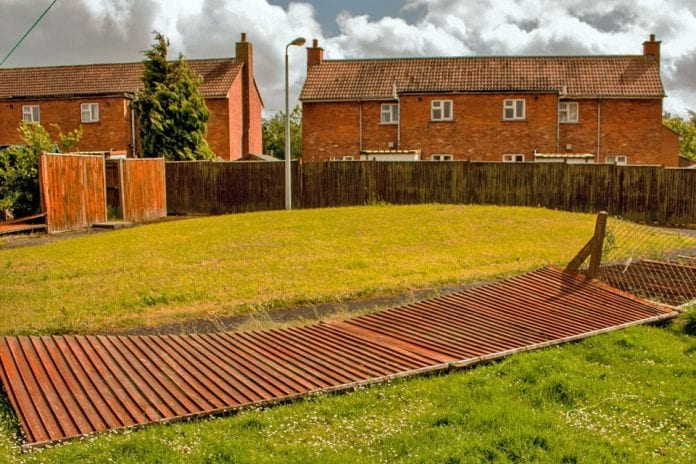With people spending more at home than ever before, DIY projects are in full swing as people seek myriad ways to keep themselves occupied. Unfortunately, when it comes property boundaries and pruning hedges, neighbourly niggles can still occur.
These arguments can easily spill over into a legal dispute, and resolution can be a costly and time consuming process. Nicole Rogers, Solicitor, DAS Law, looks at how to avoid a boundary dispute…
How can I best avoid a boundary dispute in the first place?
Boundary disputes occur when two people both believe they have the right to a piece of land. They often begin when one person puts up a fence or wall on land which another person thought belonged to them.
The best way to avoid a boundary dispute happening in the first place is to try and firmly establish the boundaries of the land before you change anything. Even work which you do not think will change anything could lead to trouble if you are not cautious.
For example, if you intend to replace a hedge with a fence, you should bear in mind that a fence will set a far more specific boundary than the hedge did, and this could lead to a boundary dispute if your neighbours do not agree with where you have put it. For this reason, you should never change or add a boundary divider without checking with your neighbours first.
How can I find out the exact boundary of my property?
In order to properly establish a boundary, you should first gather as much information as possible about your property and the properties bordering it. Consult your title deeds and obtain information from the Land Registry. This should give you some idea of where your property begins and ends.
In many cases, the boundaries of property are only vaguely defined, so existing documentation may not give you exact information. The best way to deal with this situation is to reach an agreement with your neighbours on where the boundary should be. Taking the time to reach an agreement in this way is a far better approach than facing off in a costly court battle over what may amount to less than a few feet of land.
Obtaining help from a solicitor or chartered surveyor is an option at this point if you are concerned about the outcome. Once you have found an acceptable compromise with your neighbours, have them to sign an agreement stating their acceptance. You should then employ a surveyor to draw up a plan specifying the agreed-upon boundary and submit it to the Land Registry, ensuring that the boundary is clearly established in the records.
If there is any dispute over the boundary, what is the process to resolving the issue(s)?
If you are already involved in a boundary dispute, you will probably need to seek advice over the issue from a chartered land surveyor or a chartered surveyor who specialises in boundary disputes. Proving which parts of the land belong to whom will mean looking over the deeds to the properties involved and consulting the Land Registry’s records.
It may be that the boundary can be established by the surveyor’s report, but often they find that it is not clearly defined, or your neighbour hires a surveyor who disagrees with yours. When no agreement can be reached between you and your neighbour, the case will likely end up going to court, where a judge will rule on the location of the boundary resulting in the extent of each party’s land being clearly defined.
For properties that have an ‘invisible’ boundary, am I allowed to put erect a wall or fence to determine the exact boundary line?
A party wall is a wall shared with your neighbours. This can include the side walls of semi-detached or terraced houses, and garden walls which are built on both sides of a boundary.
Under the Party Wall Act 1996, anyone planning to carry out certain work on a party wall is required to obtain the agreement of the other person to whom the wall belongs.
You must obtain written agreement from your neighbour if you intend to:
- Knock down and rebuild a party wall.
- Cut into a party wall so that it can hold up a beam.
- Increase the height of a party wall, removing anything on it which might prevent this.
- Strengthen the foundation beneath a party wall or part of one.
- Place a damp-proof course layer within a party wall.
- Cut a flashing into a building adjoining a party wall.
If you wish to carry out any of these types of work on a party wall and you do not have the agreement of your neighbour you must obtain a formal award under the Party Wall etc. Act 1996 (known as a party wall award) from a Party Wall Surveyor before commencing the works.
Most ordinary household tasks such as adding shelves or re-plastering a wall are not affected by the Party Wall Act. It only covers work which could potentially affect the structural integrity of a party wall.
The Act also requires you to get permission for some types of building work not relating to party walls, including:
- excavating foundations lower than the foundations of a neighbour’s structure within three metres;
- excavating foundations below a 45° line drawn from the bottom of the foundations of any structure within six metres belonging to a neighbour;
- building a new wall straddling the boundary of your property and theirs.
Similarly if you are planning to do any of this and do not have your neighbour’s agreement you should obtain a party wall award before commencing the works.
Disclaimer: This information is for general guidance regarding rights and responsibilities and is not formal legal advice as no lawyer-client relationship has been created.

Help keep news FREE for our readers
Supporting your local community newspaper/online news outlet is crucial now more than ever. If you believe in independent journalism, then consider making a valuable contribution by making a one-time or monthly donation. We operate in rural areas where providing unbiased news can be challenging. Read More About Supporting The West Wales Chronicle























